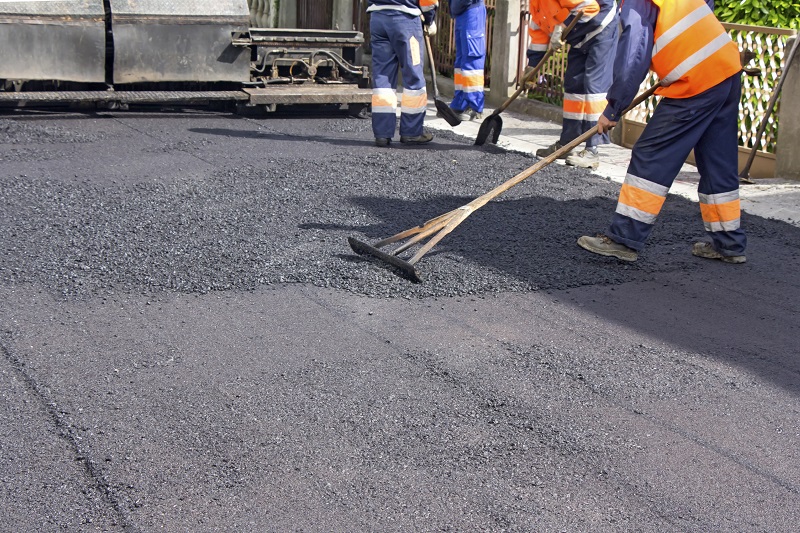Unlocking the Tricks of Hot Mix Asphalt Modern Technology
Exploring the depths of hot mix asphalt technology uncovers a world where meticulous processes and exact formulas assemble to form our roads and facilities. The combination of accumulations, fillers, and binders isn't just a building and construction job however a calculated orchestration of toughness and performance. As we peer into the elaborate dance of components, a tapestry of strength and sustainability unravels. However what lies below this surface of asphaltic proficiency, and what keys wait to be introduced in the world of paving innovations?
Significance of Warm Mix Asphalt
Hot Mix Asphalt plays an important duty in contemporary infrastructure growth because of its durability and cost-effectiveness. As the most commonly utilized leading material for roadways, freeways, and car park, Warm Mix Asphalt provides an array of benefits that contribute to its relevance in construction tasks. One key advantage is its capability to withstand rush hour loads and severe climate condition, offering a durable and dependable surface for transport networks. In Addition, Warm Mix Asphalt is affordable in both preliminary building and construction and long-term maintenance, making it a recommended selection for many facilities tasks.
The longevity of Warm Mix Asphalt originates from its make-up, that includes accumulations, binder, and filler materials that are thoroughly chosen and mixed to meet specific performance needs. This specific mix leads to a flexible and strong sidewalk that can sustain constant usage without considerable deterioration. Furthermore, Hot Mix Asphalt is 100% recyclable, more boosting its sustainability and environmental benefits. On the whole, the relevance of Hot Mix Asphalt in framework growth can not be downplayed, as it continues to be a cornerstone of modern-day building practices.
Parts of Asphalt Mixes
The composition of asphalt blends includes meticulously selected accumulations, binder, and filler materials that are crucial for accomplishing specific efficiency needs. Aggregates are the key component of asphalt mixes, supplying toughness and stability. These aggregates can be natural, such as gravel or crushed stone, or artificial, like recycled materials from old pavements. The binder, typically asphalt or asphalt concrete, holds the aggregates with each other and gives flexibility and durability to the mix. The choice of the binder is critical as it directly influences the mix's efficiency in various climate condition. Fillers, such as moisturized lime or Rose city cement, are utilized to boost the mix's workability and aging resistance. Angled Parking.
The mix and percentage of these parts play a substantial duty in identifying the top quality and efficiency of the asphalt mix. Designers carefully create the mix to fulfill details needs, thinking about variables like website traffic quantity, environment problems, and sidewalk life-span. Correct option and harmonizing of accumulations, binder, and fillers are essential for creating durable, long-lasting asphalt sidewalks.
Combining and Manufacturing Methods

When the aggregates are chosen, the binder, typically asphalt concrete, is included to bind the products with each other. The binder's top quality and amount significantly impact the mix's strength, flexibility, and resistance to environmental elements. Additionally, fillers like moisturized lime or Rose city concrete might be integrated to improve particular qualities of the asphalt mix, such as its workability or moisture resistance.
During manufacturing, the accumulations and binder are heated up, generally between 250-325 ° F(121-163 ° C ), to assist in mixing and ensure proper covering of the aggregates. The mixing procedure has to be thorough to attain a homogeneous mix that promotes the wanted performance characteristics of the asphalt. Numerous methods, such as batch mixing or drum mixing, are used to accomplish consistent and high-quality asphalt mixes for building and construction jobs.
Elements Influencing Asphalt Efficiency
Elements influencing asphalt efficiency encompass a variety of variables that influence the resilience, see this long life, and general quality of asphalt sidewalks. One vital variable is the high quality of products used in the asphalt mix.

Design considerations, such as sidewalk density and water drainage, are essential in ensuring the long-lasting efficiency of the asphalt sidewalk. By carefully considering these aspects, designers and service providers can optimize asphalt efficiency and boost the solution life of pavements.
Sustainable Practices in Asphalt Technology

WMA permits for the production and positioning of asphalt mixes at reduced temperatures compared to typical hot-mix asphalt, resulting in decreased power consumption and greenhouse gas discharges. The use of porous asphalt blends can help alleviate stormwater runoff problems by permitting water to infiltrate with the sidewalk and right into the ground, promoting all-natural water filtration and charge procedures.
Conclusion
Finally, warm mix asphalt modern technology plays an important function in modern-day infrastructure advancement because of its durability and cost-effectiveness. By thoroughly balancing elements, utilizing appropriate blending methods, and thinking about different aspects, designers can develop high-grade asphalt blends that endure hefty website traffic lots and harsh weather. Welcoming lasting techniques, such as making use of warm-mix modern technologies and recycled products, better boosts the ecological kindness of asphalt technology.
Blending and manufacturing methods in hot mix asphalt technology entail the exact combination and processing of accumulations, binder, and fillers to develop a high-performance and resilient asphalt mix.Elements affecting asphalt efficiency include a variety of variables that impact the durability, long life, and general quality of asphalt sidewalks. Sustainable practices in asphalt modern technology include various campaigns why not try this out aimed at reducing the ecological effect of asphalt manufacturing and paving processes. By incorporating reclaimed asphalt sidewalk (RAP) and recycled asphalt tiles (RAS) into new asphalt blends, the sector can considerably minimize the consumption of raw materials and energy, while additionally lowering landfill waste.
WMA permits for the manufacturing and placement of asphalt mixes at lower temperature levels compared to standard hot-mix asphalt, resulting in minimized power intake and greenhouse gas emissions.